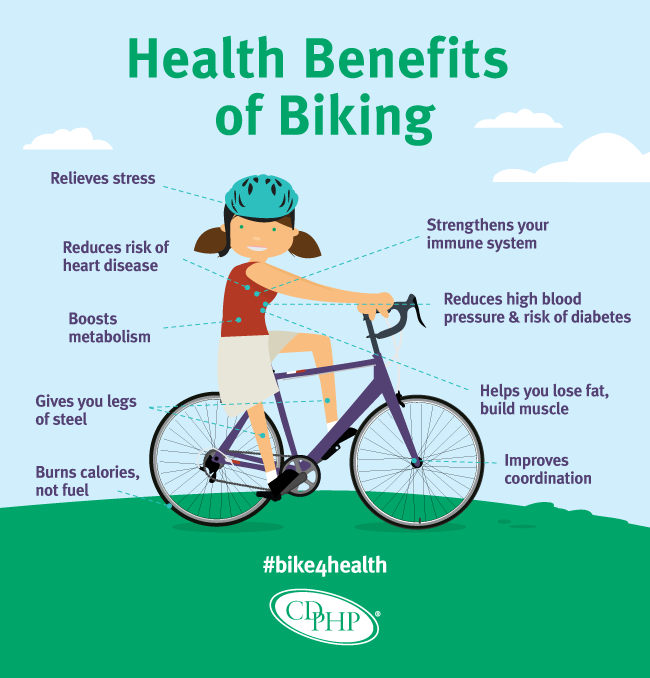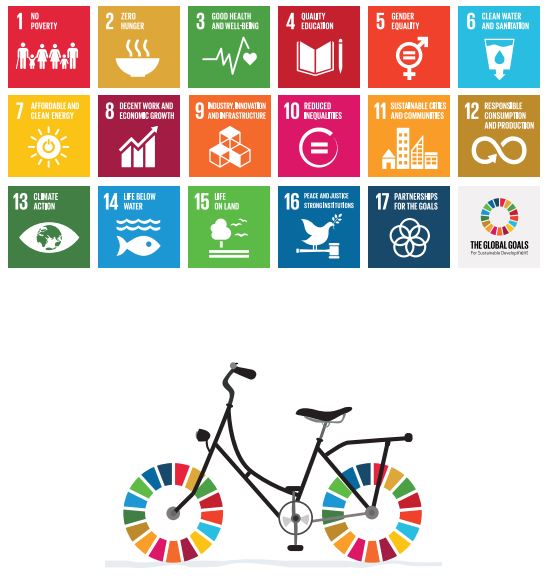|
|
The Sustainable Development Goals emphasize the importance of mobility in development plans. Increased cycling in local transportation is a key piece in the climate change-mobility puzzle.
Cycling allows cities to decouple population growth from increased emissions and enhance air quality and road safety.
Busy? Try the speed read.
The scoop: Cycling is a simple but effective way for individuals to reduce their carbon footprint. On a larger scale, cycling is an important tool in fulfilling the UN’s Sustainable Development Goals (SDGs).
Facts and figures:
- 50% of all deliveries in metro areas can be completed by bicycle.
- Switching from a car to a bicycle saves 150g of CO₂ per kilometer. (UNEP)
- A 2015 Institute for Transportation and Development Policy study concluded that a dramatic increase (about 20%) in cycling worldwide could “cut carbon dioxide emissions from urban passenger transport by nearly 11 percent in 2050.” (bicycling.com)
- In 2019, direct greenhouse gas (GHG) emissions from the transport sector accounted for 23% of global energy-related CO2 emissions, with 70% of direct transport emissions coming from road vehicles. Case studies suggest that active mobility like walking and cycling could reduce emissions from urban transport by up to 10%. (UCI)
Bottom line: Cycling allows individuals to lead a healthier, more sustainable lifestyle. And when an entire society adopts cycling, it can profoundly impact the climate.
Dig deeper → 4 min
How does cycling help the climate and SDGs?
Cycling transcends economic status
Cycling is a low-cost and easy mode of transportation that provides access to markets, education, employment, and social activities in urban and rural areas. The bicycle is popular among people and goods because it is often the cheapest technical mode of transportation, allowing clients to save money on vehicles.
Cycling can cut commuting time by more than half for individuals who would otherwise have to walk, providing greater job possibilities, markets, schools, and communities.
The potential for economic expansion through cycling-related employment creation is promising—investments in cycling present excellent prospects for successful national, regional, and international poverty reduction.
Cycling promotes physical well-being, healthy living
Cycling promotes a healthy and nonpolluting lifestyle. Cardiovascular diseases and other adverse effects of sedentary living are reduced by physical activity cycling. When individuals switch from motorized to bicycle transportation, both air quality and road safety improve.

Regular cycling adds to the overall well-being of the body. Studies show how it helps ease problems in the knees, shoulder, spine, etc. Creating safe cycling conditions reduces the number of worldwide fatalities and injuries caused by road traffic accidents.
Cycling is affordable and clean, helping climate goals
Cycling, in particular bike-sharing schemes, lowers the energy consumption of transportation systems by utilizing renewable human power in the most efficient way to transport people and goods. E-bikes offer energy-efficient mobility for most city dwellers to use.
Combined with public transportation and logistics networks, cycling is also an excellent option for short distance travel. Individuals with access to a safe, efficient, affordable, and environmentally friendly transport mode can exercise their bodies while reducing their carbon footprints.
Sustainable cities and communities need cycling
Cycling promotes a more sustainable economy, making cities and human settlements more inclusive, safe, resilient, and sustainable. Cycling is cost-effective, safe, nonpolluting, healthy, and environmentally beneficial. On the one hand, it is highly resistant to sophisticated high-tech engineering and is thus an incredibly durable mode of transportation.
On the other hand, modern communication and e-recycling technologies have cycling into city Intelligent Transportation Systems. The more sustainable a transportation system is, the greater its modal share of walking, cycling, and public transport.
Responsible consumption and production
Bicycling may help people and products move about – as commuters, customers, and tourists – while generating, buying, and delivering items more sustainably. Bicycling is well-suited to regional and local economies with its many sizes and scales.
50% of all deliveries may be completed by bike in many metropolitan areas. Furthermore, the cycling tourism industry is growing, providing more alternatives for people to choose from.
Cycling helps climate, lowers emissions
Bicycles symbolize decarbonizing transportation and society; they provide the opportunity for rapid climate action. Governments can make a difference by adding cycling to their climate action plans, policies, training, and awareness-raising efforts.
Cycling eases food access

Many small-scale food producers depend on cycling for their livelihood. It can provide secure and fair access to land, inputs, knowledge centers, financial services, resources, markets, and job opportunities for non-farm employment.
Cycling is beneficial in terms of providing access, especially for the poor. A more affordable mode of transportation enhances accessibility to food markets and communities, increasing nutrition choices while ensuring food items’ long-term transit.
Women benefit from cycling
Cycling allows women and girls to access water, schools, markets, and otherwise unattainable jobs via public transportation or walking. Because it increases the number of female cyclists, safe infrastructure for cycling promotes gender equality.
Economic growth fueled by cycling
The cycling industry sector, which includes goods and services for sustainable, multimodal transportation of people and goods, sustainable tourism, and healthy leisure activities, is one of the world’s most vibrant industries.
According to Eurostat, the cycling industry employs more people than any other form of transportation: For every million euros in turnover, bike manufacturing creates 4.89 full-time jobs, approximately three times as many as the air and spacecraft sector (3.9 jobs). Furthermore, this is almost ten times more than the automobile industry (1.63 per million Euros).
New city infrastructure should consider walking and cycling for climate goals
Cycling allows individuals to substitute using personal motor vehicles with active mobility (walking and cycling) and public transport.
Governments may build more resilient infrastructure and sustainable transportation systems for economic development and human well-being, focusing on affordable and equitable access for all as more people cycle more frequently.













No Comments